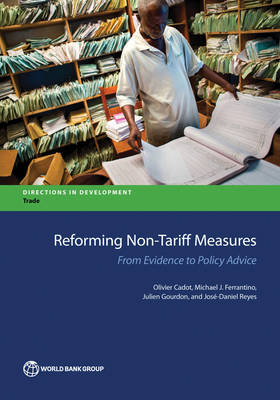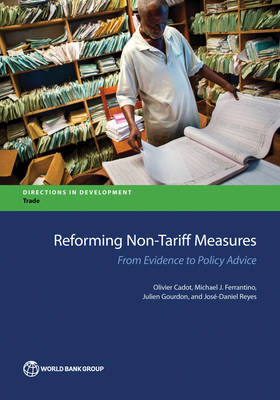
- Afhalen na 1 uur in een winkel met voorraad
- Gratis thuislevering in België vanaf € 30
- Ruim aanbod met 7 miljoen producten
- Afhalen na 1 uur in een winkel met voorraad
- Gratis thuislevering in België vanaf € 30
- Ruim aanbod met 7 miljoen producten
Zoeken
Reforming Non-Tariff Measures
From Evidence to Policy Advice
Olivier Cadot, Michael J Ferrantino, Julien Gourdon, José-Daniel Reyes
€ 40,45
+ 80 punten
Omschrijving
High levels of trade costs persist in the world trading system, despite recent progress in tariff reduction, trade facilitation, and logistics. At least some of these costs can be attributed to non-tariff measures (NTMs), policies imposed by governments other than ordinary customs duties which have an impact on the price at which exports and imports are traded, the quantities traded, or both. Such costs are particularly worrisome if they have a discriminatory or protectionist effect, or violate countries' international commitments. However, even NTMs designed to carry out domestic regulatory objectives - for example, protection of human, animal or plant health, consumer or workplace safety, or the environment - can have substantial effects on international trade, which should be considered when such policies are developed. This book discusses some of the analytical methods that can be used to accompany the process of policy development for NTMs. It discusses the broad economic rationale for improving the design of NTMs;, illustrates the main forms of quantification of NTMs and their effects, including inventory approaches, price-based approaches, and quantity-based approaches; proposes a new analytical and measurable concept of "regulatory distance" to help guide deep integration efforts at the regional level; provides a discussion of the effects of NTMs on household expenditures, poverty, and firm competitiveness; and shows how empirical analysis of NTMs can be used to inform policy advice. As such, it should provide a valuable addition to the arsenal of tools available for applied analysis of international trade policy.
Specificaties
Betrokkenen
- Auteur(s):
- Uitgeverij:
Inhoud
- Aantal bladzijden:
- 120
- Taal:
- Engels
- Reeks:
Eigenschappen
- Productcode (EAN):
- 9781464811388
- Verschijningsdatum:
- 9/03/2018
- Uitvoering:
- Paperback
- Formaat:
- Trade paperback (VS)
- Afmetingen:
- 178 mm x 254 mm
- Gewicht:
- 222 g

Alleen bij Standaard Boekhandel
+ 80 punten op je klantenkaart van Standaard Boekhandel
Beoordelingen
We publiceren alleen reviews die voldoen aan de voorwaarden voor reviews. Bekijk onze voorwaarden voor reviews.








